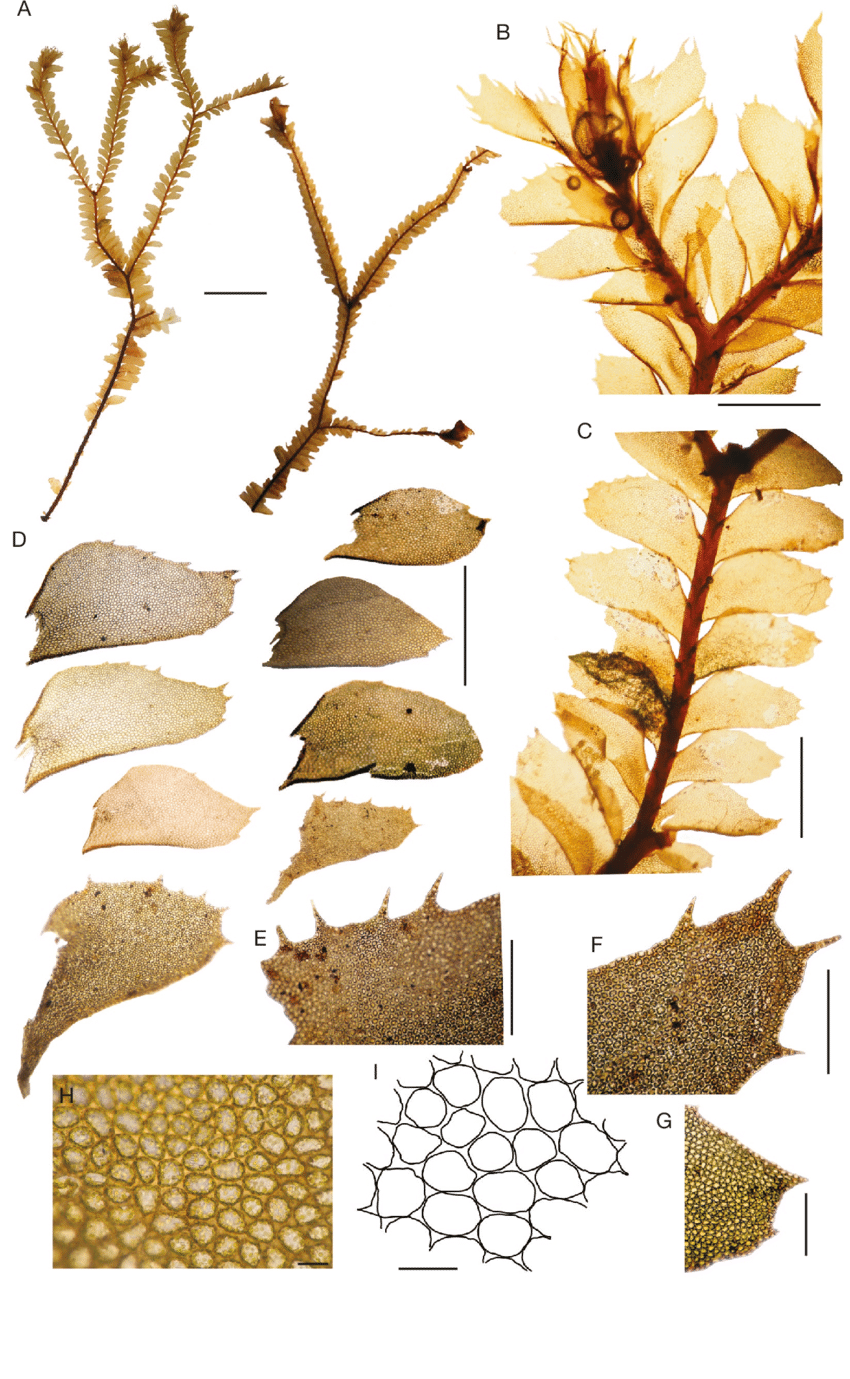
Plagiochila-incerta-Steph-A-habit-B-shoot-in-ventral-view-with-terminal-female.png from: https://www.researchgate.net/figure/Plagiochila-incerta-Steph-A-habit-B-shoot-in-ventral-view-with-terminal-female_fig7_360631517
Exploring the Fascinating World of Plagiochila cava Steph. Moss
Introduction
Have you ever stopped to admire the tiny, intricate world of mosses? One particularly captivating species is Plagiochila cava Steph., a member of the Plagiochilaceae family. In this blog post, we’ll dive into the fascinating details of this unique moss, from its morphology to its ecological roles. Get ready to be amazed by the wonders of Plagiochila!
Background
Plagiochila cava Steph. is a species of leafy liverwort, which are non-vascular plants in the division Marchantiophyta, class Jungermanniopsida. The genus Plagiochila contains over 1,600 accepted species found around the world. P. cava was first described by German botanist Franz Stephani in 1916.
Morphology and Identification
P. cava forms loose mats with irregularly branched shoots that are 1-3 cm long. The leaves are succubously inserted (the upper edge of each leaf overlaps the lower edge of the leaf above it), oblong to obovate in shape, and 1.2-2 mm long. A key identifying feature is the distinct vitta (a central strand of elongated cells) in the leaves.
The underleaves are small to virtually absent. Rhizoids are scarce to moderate and scattered on the stems. Gemmae (asexual reproductive structures) are occasionally produced on leaf margins. The plants are dioicous with male and female organs on separate individuals.
Global Distribution and Habitat
P. cava has a wide distribution across subtropical and tropical regions of the world:
| Continent/Region | Countries |
|---|---|
| Asia | China, Japan, Taiwan, Indonesia, Malaysia, Philippines |
| Oceania | Papua New Guinea, Fiji, Samoa |
| Africa | Madagascar, Réunion, Tanzania |
| North America | Mexico, Costa Rica, Panama |
| South America | Colombia, Venezuela, Ecuador, Brazil |
It typically grows as an epiphyte on tree trunks and branches in humid montane forests from 500-3000 m in elevation. The species prefers partially shaded habitats with moderate to high humidity.
Ecological Roles and Adaptations
Like other bryophytes, P. cava plays important roles in its forest ecosystems:
- Provides habitat for micro-organisms and small invertebrates
- Helps regulate moisture and humidity in the forest understory
- Contributes to nutrient cycling by breaking down organic matter
- Can act as a bioindicator of air quality and environmental health
The species has several adaptations for its epiphytic lifestyle:
- Rhizoids and lobules help anchor it to bark surfaces
- Succubous leaf arrangement aids in efficient water conduction
- Desiccation tolerance allows it to survive periodic drying on exposed tree branches
Conclusion
From its intricate leaf structure to its global distribution, Plagiochila cava Steph. is a prime example of the incredible diversity found in the world of mosses and liverworts. The next time you’re walking through a humid forest, take a closer look – you might just spot this amazing little plant! What other secrets do you think the miniature world of bryophytes holds?